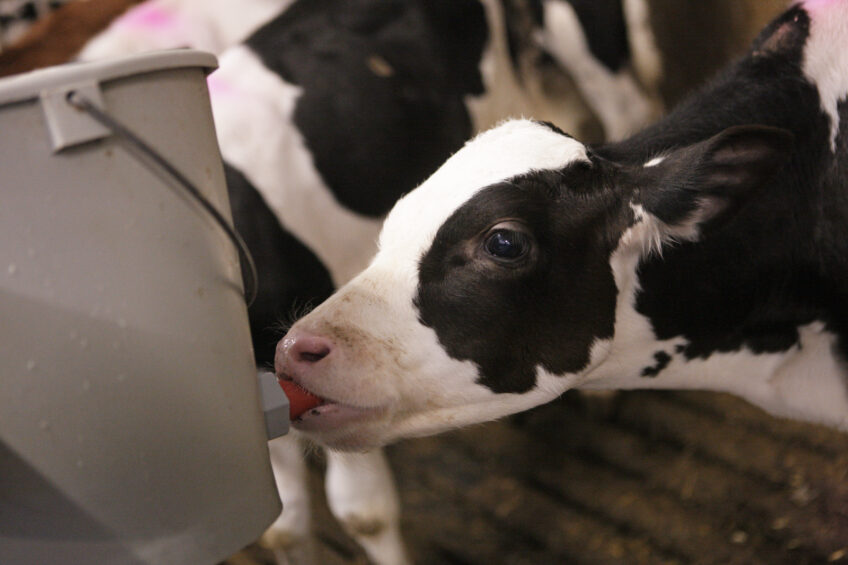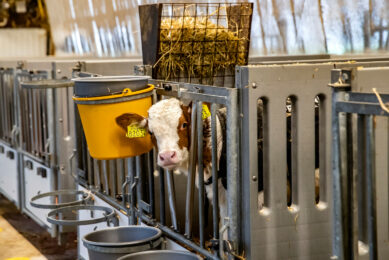Increased gain in calves provides higher milk yield

The important thing is to decide what is best for the calves when it comes to milk feeding.
Should the calf be fed with milk replacer or non-saleable and discard milk? After the calf has received a considerable amount of high quality colostrum with at least 2+.litres in the first 24 hours, it must be followed up with good quality milk. Raw milk consisting of non-saleable and discard milk is given to large calves. The newborn calves – not having a fully developed immune system yet – need pure products. Start with 4-5 litres in the first days after colostrum and then quickly increase up to 8-10 litres for a calf of large breed and 6 litres for a jersey calf. Continue the next 40 days and then reduce the milk, at first by half and then after 50-55 days the milk is taken away completely. The calf will compensate with a larger intake of a good quality calf starter with a high protein content.
Increase the gain
“Accelerated early nutrition” is a relatively new concept, and the purpose is to increase the daily gain in the milk-fed calf. Thus providing better health in the form of a stronger calf having a high dry matter intake and eventually becoming a first calver with a higher yield. Accelerated early nutrition is achievable by using good raw milk, balanced with milk powder in a ratio of e.g. 60 g per litre of milk and thus increasing the dry matter, protein and energy in the allocated milk. Allocation is 8 litres for a calf of large breed in form of 2 daily feedings.
Feeding solely with milk powder will require 140-150 g powder per litre milk to obtain the requested dry matter amount. At weaning, the calves must eat 1-1.3 kg dry matter in the calf mix in order to maintain the gain. This is obtained by using the above-mentioned weaning.
A calf ready for the future
An investment in a good quality milk replacer, good milk in large amounts and a good calf starter is an investment in the future of the dairy cow. The gain of the calf in the first 10-65 days is closely related to a later high milk yield. A daily gain from 600 g to 900 g will provide 500-600 litres more milk in the first lactation (305 days). Furthermore, an earlier age at first calving and a cow with an increased longevity and with more lactations is obtained.
Check points:
- Quality of colostrum and early allocation
- Premium quality of milk with the correct content of dry matter, protein and energy
- Always good calf starter for milk-fed calves – hay not until after weaning
- Always fresh water – preferably lukewarm in the winter period and preferably as electrolyte water
- Observe the growth, milk intake and intake of feed concentrate of the calf
- Mark the calves with clothes pegs in different colours according to their feeding group
Join 13,000+ subscribers
Subscribe to our newsletter to stay updated about all the need-to-know content in the dairy sector, two times a week.










